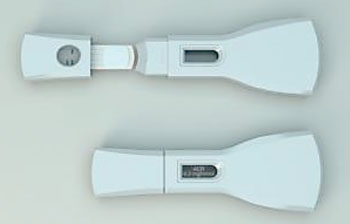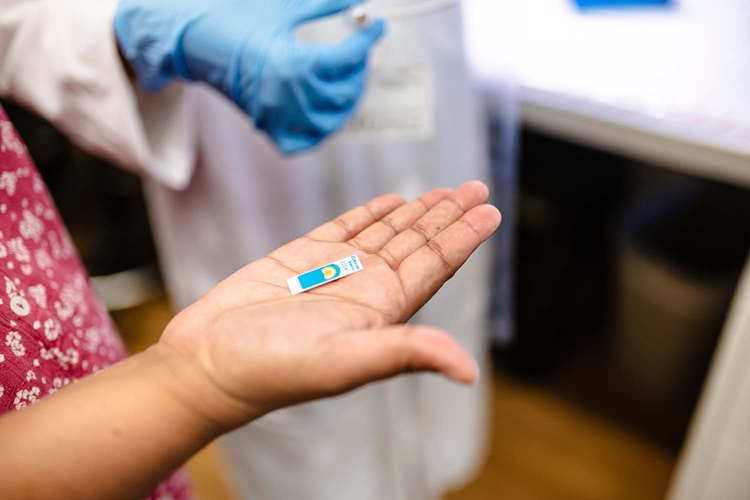Medical Device Combines Nanotechnology to Diagnose Kidney Disease
By LabMedica International staff writers
Posted on 18 Mar 2015
A new medical device which combines nanotechnology with a pregnancy tester could help diagnose and treat the one million people in the UK who don't know they have kidney disease. Posted on 18 Mar 2015
Every day 19 people in the UK are diagnosed with kidney failure yet there is currently no device that can be used by doctors for day-to-day monitoring of kidney disease and four of the 19 people will not have visited specialist services for sufficient time to prepare for their treatment.

Image: The quantitative electrochemical lateral flow assay (QELFA) device (Photo courtesy of Somersault 18:24).
The apparatus is a quantitative electrochemical lateral flow assay (QELFA) and uses nanoparticles to test the patient's urine giving results in seconds. It is linked via mobile technology so doctors can track how the disease is developing. The devise was developed by engineers and costs about GBP 10 can be used at home and could revolutionize kidney disease care in the UK, which currently costs the UK National Health Service (NHS) over GBP 1.4 billion, more than breast, lung, colon and skin cancer combined.
The devise which works like a pregnancy test was created by Bio Nano Consulting (London, UK). The digital readout of the test enables the automatic and accurate collation of kidney-function readings into a central database using mobile technology. Behind the patients who develop kidney failure and in need of rapid diagnosis are many more who will have a lesser degree of kidney dysfunction, called Chronic Kidney Disease (CKD), that will place them at increased risk of cardiovascular disease and acute kidney injury.
Helen Meese CEng, MIMech, PhD, Head of Materials at the Institution of Mechanical Engineers (London, UK), said, “The QELFA device is a brilliant example of what's possible. Using an old technology like a pregnancy tester and combining it with nanotechnology, you have a device which could not only diagnose the million people in the UK who are unaware they have kidney disease, but also help doctors effectively monitor those undergoing treatment. It could also save the NHS millions of pounds a year. But although the UK has been at the forefront of nanotechnology development, we still lag behind in its commercialization and many people are still unsure of its potential. We must change this.”
Related Links:
Bio Nano Consulting
Institution of Mechanical Engineers














